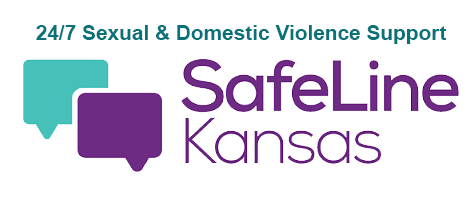Domestic Violence Survivor Information
Understanding Domestic Violence
If you are here because you are wondering whether what you're experiencing is domestic violence, you're not alone. Many people question their experiences, especially when the harm comes from someone they care about.
Domestic violence can occur between family members, friends, and intimate partners. Experiencing domestic violence doesn’t mean there must be physical violence. Financial abuse and emotional abuse are also examples of domestic violence in a relationship. More than 1 in 3 women and 1 in 4 men report experiencing domestic violence, and risk factors increase for members of minority communities and LGBTQIA+ survivors.
At the same time, research shows that women overwhelmingly continue to experience sexual violence at higher rates, yet too often face barriers to being recognized as victims and accessing the help they need. Survivors may not be believed, may face stigma or retaliation, or may encounter systems that fail to respond with safety and accountability. We also understand that for many survivors, it is not safe to reach out to an advocate, law enforcement, or medical professionals.
Safety planning can be a way for survivors to address these risks and make a plan to get help when and how it feels safe. You can create a safety plan on your own or with the support of an advocate who can walk alongside you.
The information on this page can help but this information is general. Speaking with an advocate can help you understand what is happening to you and what resources are available to help you get to safety.
It’s important to know: it is not your fault, and help is available.
Find Sexual and Domestic Violence services in your area.
If you need immediate crisis services, call the SafeLine Kansas Hotline at
or text SAFE to 847411.

I Am Not Sure if What is Happening to Me is Domestic Violence
Domestic violence is a pattern of behavior used by one person to maintain power and control over another in a relationship. This can include a spouse, dating partner, family member, or someone you live with. It doesn’t always leave physical injuries—emotional, verbal, financial, sexual, and digital abuse are all forms of domestic violence.
It is important to note that domestic violence is not gender specific. While gender attitudes can play a role in abusive behavior – domestic violence is about control. Women, men, and same sex or non-binary relationships can be abusive.
If you are experiencing abuse of any form from anyone – please
contact an advocate.
You might be experiencing domestic violence if someone you care about is:
Hurting or Threatening You – Including to Get You to Do What They Want
- Physical violence is never acceptable in a relationship, but it is abusive to threaten violence towards you or someone else in order to get you to do what that person wants – this is coercive control
- “You made me do it,” does not excuse abuse
Controlling Your Money or Resources
- Making you give them your money from work, sign over your check, or deposit your money into an account with them but denying you access to those funds is abuse
- Refusing to let you have access to a phone, computer, or be able to see a doctor are just some examples of how an abuser can withhold resources
Isolating You From Friends, Family, or Support
- If someone is actively working to cut you off from friends or family by denying you the ability to see or contact them – that is abusive behavior
- If a person punishes you for talking to someone else about what is happening in your relationship or family, that person is being abusive
Monitoring Your Phone or Social Media
- Forcing you to share your password or give access to your social media or phone so you can be monitored is abusive
- Demanding approval over what you post or forcing you to post content that hides or denies what you are experiencing in the relationship is coercive control
Pressuring or Forcing You into Sex
- You never give up consent when it comes to sexual relations. It doesn’t matter if it’s the first time you are with someone, or you are married, or in a long term relationship. No one has the right to make you engage in sexual activity you don’t want to experience
- Using tactics like “shaming” or “guilting” you into sexual activity is coercive behavior and wrong
Blaming You for Their Behavior or Denying Abuse
- “You made me do this,” is something an abuser will often say to excuse what they have done and make you feel like you deserve the treatment – that is wrong. Nothing you do deserves abuse or efforts to control you
- Telling you that the controlling and emotionally abusive behavior didn’t happen or that what happened to you was your fault, you didn’t experience violence you just fell down – these are examples of what is sometimes called gaslighting behavior and abusive. An advocate can help you understand more about how abusers will use these tactics
Domestic Violence Can Happen to Anyone
It happens in all types of relationships—regardless of age, race, gender, sexual orientation, or income. Abuse can occur in same-sex or different-sex relationships, in marriages or dating relationships, and among roommates or family members.
Your relationship status or identity does not change your right to be safe.
How Can I Tell If I’m Experiencing Domestic Violence?
- Do you feel afraid of your partner or avoid doing things that might upset them?
- Has your partner ever destroyed your belongings, threatened you, or hurt pets?
- Does your partner blame you for their anger or behavior?
- Do they make you feel worthless or humiliate you in front of others?
- Do you feel like you can’t leave or have no control over your life?
If any of this sounds familiar, know that what you're experiencing is not okay. Abusers will try to do anything they can to make you feel alone and without options and help.
We are here to tell you that you are not alone. Speaking with an advocate can help you talk through more of what is happening to you and what you can do to stop being treated this way.
You might feel confused, scared, or even guilty. You may love or care about the person who is hurting you. These are normal and valid feelings. Here are some signs to consider:

You Have Options
No one can tell you what to do or when to leave. But if you are ready to talk or get help, here are some things to know:
- Advocates can help you explore your options, plan for safety, and connect you with housing, counseling, or legal help.
- Emergency Shelter and support services are available across Kansas.
- Law Enforcement: You have the right to call the police and seek protection. Advocates can explain this process and support you along the way.
Protection Orders: Kansas offers legal options for survivors seeking protection from harm. We recommend any protection order be done in conjunction with a Safety Plan.
Remember:
- What happened is not your fault.
- You deserve to be safe, respected, and heard.
- Help is always available, no matter your situation.
You do not have to go through this alone.
All Services Are Free and Confidential
KCSDV and its network of programs provide services that are confidential, trauma-informed, and always survivor-centered. We respect your choices and your privacy.










